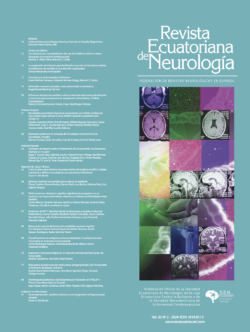Using neuropsychological tests that have normative data from the population in which they are being applied has positive effects on the accuracy and validity of the diagnoses, which can influence the effectiveness of the interventions derived from them. In addition, it provides greater precision in the studies that use such tests. In Ecuador, there are no studies on the use of standardized tests, which is why the objective of this study was to identify the neuropsychological tests for children and adolescents that have been adapted, standardized and/or validated in Ecuador. A systematic review was conducted using the PRISMA model. There are 10 tests with normative data for the Ecuadorian population: Wisconsin Card Sorting Test Modified Version, Trail Making Test, Color and Word Test: STROOP, Peabody Picture Vocabulary Test, Symbol and Digit Test SDMT, Rey Complex Figure – Osterrieth, Learning and Verbal Memory Test (TAMV-I), Concentration Endurance Test (d2), Verbal Fluency Test and Token Test. The instruments allow the evaluation of 17 cognitive functions. Based on the results, it is recommended that the country’s professionals choose to use these tests and their Ecuadorian scales.
validez
Propiedades psicométricas de un Instrumento de Tamizaje para Autismo (ITEA) en niños y adolescentes del Ecuador. Psychometric properties of an Autism Screening Instrument (ITEA) in children and adolescents from Ecuador
This study explores factorial validity of the Autism Spectrum Screening Test (ITEA) for the identification of autism in schooled children and adolescents in Ecuador. The psychometric study analyzes the validity and reliability, as well as internal consistency of the elements of the scale. The sample consisted of 848 autistic people, and 350 non-autistic, of ages between 4 and 17 years old, who attended regular schools. The Confirmatory Factor Analysis shows that the ITEA adjustment model behaves adequately for the Ecuadorian population, corroborated by means of a model of four first-order factors and a second-order general agglutinating factor with 32 items, in fact, the absolute, relative, and non-centrality-based fit indicators confirm this. In addition, the scale is highly reliable in terms of internal consistency with ω= .92 [.91 – .93], since it allows obtaining greater precision in the evaluation of the studied construct. It can be concluded that evidence of factorial validity and reliability show that the ITEA, in its structural model, is adequately adjusted for the screening of autism in schooled children with ages between 4 to 17 years old
in Ecuador. According to Support Vector Machines (SVM), which allows information regarding the accuracy of each evaluated item, the set of 42 items reached 89.04% Analysis using the Request for Evidence test (RFE) showed that, in order to increase the accuracy level of ITEA, 31 items exceeded the global value. Regarding the 7 categories evaluated (language, communication, social skills, affectivity, information processing, inflexibility, and sensory perception), a value of 89.387% was obtained, according to the SVM algorithm with “rbf” kernel. The data shows the ability of ITEA to show specific characteristics to identify autism





